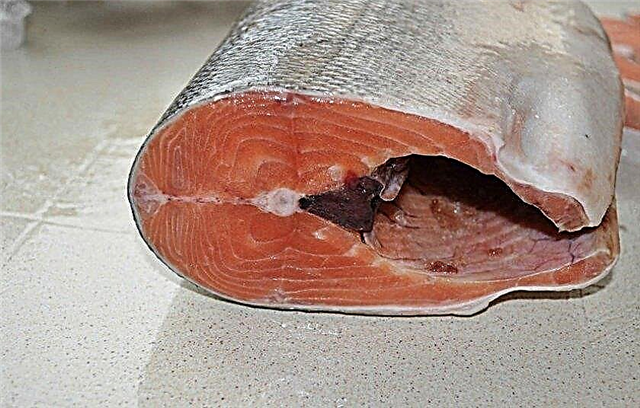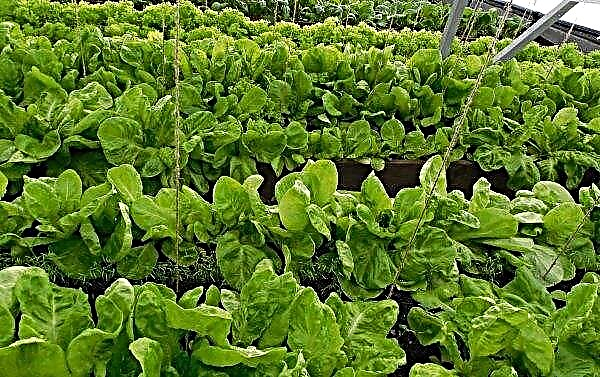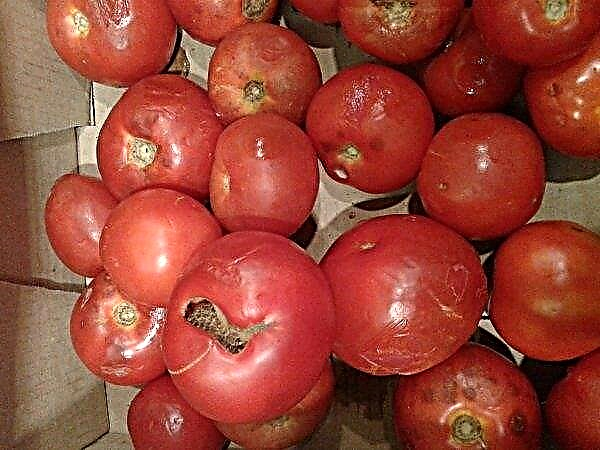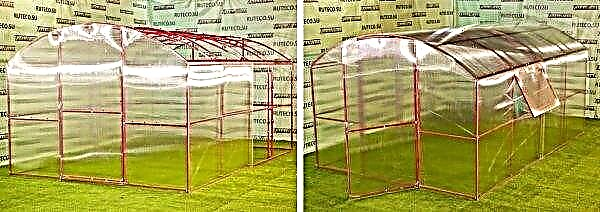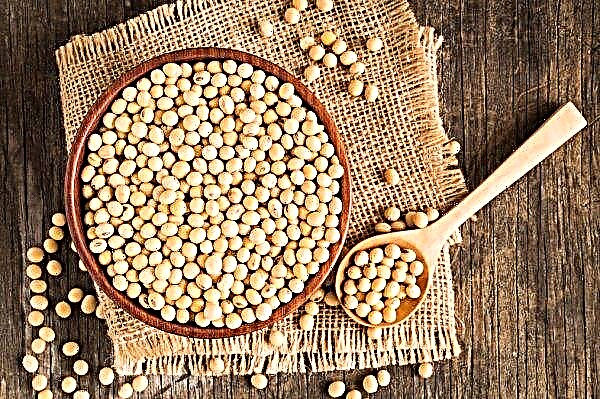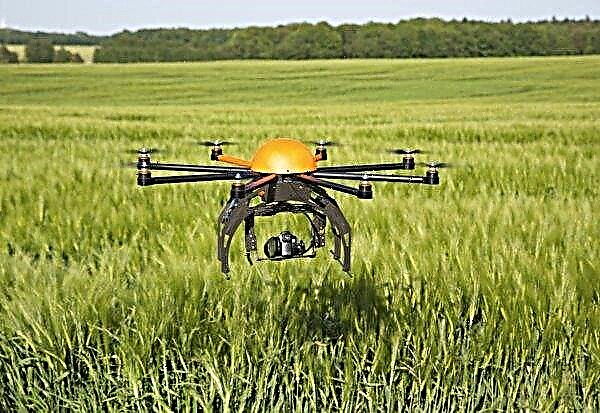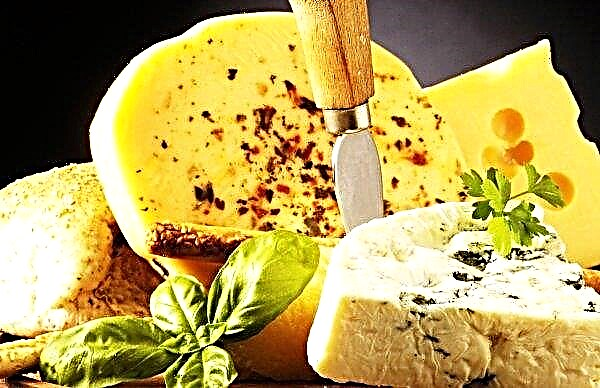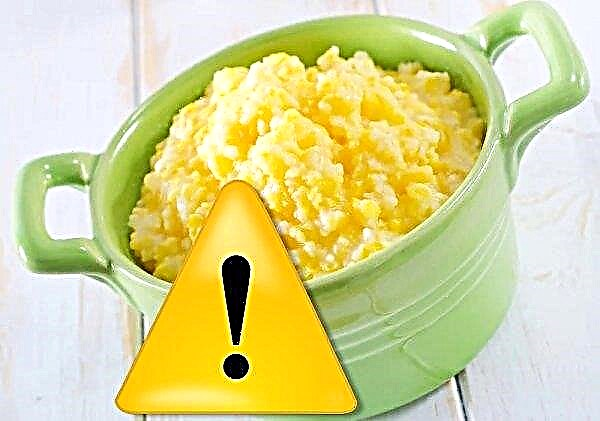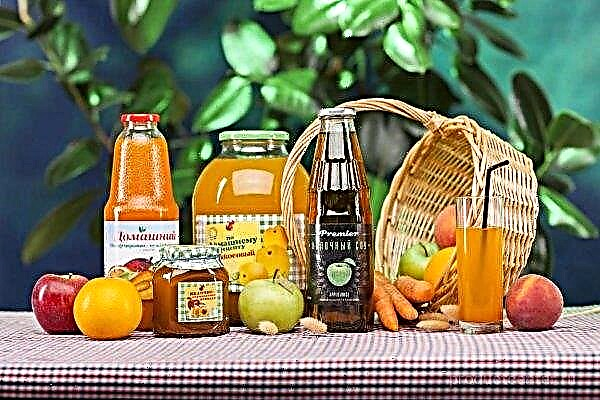Cattle are kept in a stable divided into stalls. For each individual, a stall is her personal space where she rests, eats. The comfort of the animal depends on how well this place will be equipped, and, therefore, productivity indicators. Today we’ll talk about arranging a do-it-yourself stall for cows.
Stall Construction Requirements
When planning a construction of a corral, any farmer is guided by his capabilities, the availability of premises that can be converted, as well as the size of the livestock in his farm.
Did you know? In Europe, there was a time when cows were on equal terms with the people before the law. The trial took place with strict adherence to the letter of the law. The most serious punishment for the animal was its excommunication.
However, you must always consider the basic rules for building a stall for cattle:
- the chosen place should be on a hill so that it is not flooded by meltwater;
- the building should have runoff and be located away from residential buildings, sources of drinking water;
- you need to choose high-quality and durable material;
- When drawing up a construction plan, it is important to consider the needs of the animal
- it is necessary to create conditions for fixing the animal during milking and for feeding;
- the leash should not interfere with the animal drinking, eating, moving down / up;
- the cow needs free entry / exit to the stall, as well as moving along the stable;
- service personnel should have free access to cows.

Dimensions for anchor content type (length and width)
The main thing in the construction of the pen is to take into account the dimensions of the animal, because the cow must be standing with all the limbs in the stall and be able to lie down freely.
There are standard sizes of stalls depending on the size of the livestock, we present them in the table: Standards prescribed for different types of animals:
Standards prescribed for different types of animals:
| Type of animal | Width of the stall, cm | Stall length, cm |
| Dead and dairy | 100–120 | 170–200 |
| Deep pregnancy | 120–200 | 200 |
| Novotelnye | 120 | 200 |
| Meat | 90–100 | 170 |
Bulls are larger and stronger than cows, so their requirements are slightly different. The size of the stall is 250x200 cm. If it is kept in a stall, then its dimensions are 350x350 cm. It is imperative to install protective fences in the room that will prevent the animal from reaching the wall. The leash should be strong.
Important! Whatever type of calf you choose, the size of the room should allow the baby to move freely.
Two methods are used for keeping calves:
- conservative (in a cage in a warm barn with a wooden floor - up to 1.5 months, then in a room with an area of at least 4 square meters);
- cold (in a warm box with a corral on the street, the ratio of length to width is 2 to 1).

Foundation
The foundation is the foundation of any structure - how long the construction lasts depends on its quality.
The foundation needs to support the weight of the entire room. On this basis, it can be divided into several types: tape, monolithic, columnar. The weight of the brick building is best maintained with a monolithic base.
If the structure is planned to be built of wood, then columnar will be enough. When creating the foundation, it is necessary to equip the water drain and perform waterproofing.
You can lay out the base of the building with rubble stone or burnt brick and fix it with cement, concrete (you can simply pour it with concrete).
Flooring
Animals will walk on the floor, so first of all it should be comfortable for their hooves.
It is very important that the floor does not allow moisture to pass through, since dampness is harmful for hooves, and if the material absorbs waste, a lot of harmful gas will accumulate in the room. For animals, a wooden flooring would be ideal: it is easy to lay out, it does not allow heat to pass through, but quickly becomes unusable due to moisture.
Therefore, to make the floor waterproof, it is made of concrete, and litter is made to maintain heat. In addition, such a floor does not deform under the weight of animals and does not allow rodents to penetrate into the barn. The floor must be performed with a slope of 2–3%, so that the waste flows into the manure storage. To drain the excrement, gutters 100 mm high and 200 mm wide are laid.
The floor must be performed with a slope of 2–3%, so that the waste flows into the manure storage. To drain the excrement, gutters 100 mm high and 200 mm wide are laid.
Walls
The task of the walls is to protect the animal from the winds and create a certain microclimate in the room. When constructing a large stall, walls are best erected from adobe bricks. At the bottom, it is necessary to make the edging of the building from ordinary brick: made of clay and straw, the brick holds heat and dry well.
You can build a room from burnt bricks, but then the wall thickness should be 1.5 bricks.
If you plan to build a small barn, you should build walls of wood: this material also retains heat well and is environmentally friendly.
Important! When constructing walls, keep in mind that the barn should have windows.
Roof
The roof is mostly lined with tiles or slate, sometimes covered with polycarbonate (most often in the southern regions). It is best that there is an attic under the roof - it will act as an air gap and will not allow heat to leave the room in frost.
In addition, in the attic you can store hay and necessary utensils.
Additional items
When erecting the “box” of the barn, it is necessary to take into account the mandatory ventilation, best of all the supply and exhaust type. The exhaust pipe can be made from boards and install a shutter on top. The damper prevents the precipitation from getting inside; it is closed for the winter. The crib is illuminated by natural light coming in through the windows. They can be of any shape and made of any material. It is most convenient if the windows have a swinging or lifting structure.
The crib is illuminated by natural light coming in through the windows. They can be of any shape and made of any material. It is most convenient if the windows have a swinging or lifting structure.
The amount of natural light entering the room varies depending on the time of the year, therefore, to maintain the required length of daylight in cold weather, a stable should be equipped with lamps.
Of course, you need to take care of the feeders and drinking bowls. The feeders are made of wood or brick: the material does not play a special role, the main thing is that the surface of the product is smooth and can not injure the animal. The optimal shape is an inverted trapezoid.
Such feeders are easy to clean, fill, and it is convenient for cows to get food from them. Their back side should be 75 cm high and the front side 30 cm. At the bottom, they should be 40 cm wide and 60 cm at the top. The food container is located in front of the stall and at a height of 70 mm from the floor.
Drinking bowls are placed higher and placed in the far corner. It is desirable that the water supply is carried out automatically, then the animal will be able to quench thirst at any time.
A very important element of the additional equipment of the barn is the litter. It allows you to adjust the microclimate in the room and serves as a bed for the animal. It is usually performed from straw cutting, often mixed with peat.
Important! To reduce the number of germs inside the barn, place a box with sawdust dipped in creole or another disinfectant at the entrance. When entering the stable about these sawdust you can clean your shoes.
The litter should be dry, so about three kilograms of straw cutting for each individual should be added daily. When the litter layer reaches a meter in height, it is completely removed and a new one is laid.
How to make a do-it-yourself stall
Before proceeding with the construction of the stall, it is necessary to calculate its size taking into account the size of the animal and execute the drawings - they will help to correctly position all the structural elements.
Barn scheme When you have completed the drawing of the stall, you need to consider what material you will make it from. Usually use wood or metal. The design should be strong, safe for the animal, durable and at the same time convenient for size adjustment.
When you have completed the drawing of the stall, you need to consider what material you will make it from. Usually use wood or metal. The design should be strong, safe for the animal, durable and at the same time convenient for size adjustment.
Therefore, it is desirable to give preference to metal, if there is such an opportunity, although it is more difficult to work with it than with wood.
You will need:
- metal pipes d = 60 mm (their length and quantity will depend on the size of the stall, the height of the room and the design of the structure);
- concrete mortar;
- fastenings for pipes (couplers, bolts, nuts);
- welding machine;
- timber 50x50 mm (logs for flooring, choose the length according to your size);
- 40 mm board (select the flooring, length and width yourself);
- self-tapping screws for fixing boards;
- a planer for planing the board (if not processed);
- wood preservative;
- brush for applying an antiseptic;
- ruler level;
- roulette.
Important! Wooden flooring is needed when the floor is concrete or when it is made without a slope.
Suppose your barn is designed for two cows, and each needs its own stall.
Making a stall for a cow: video
Consider the stages of manufacturing such a stall:
- We divide the room into two halves and draw a line in the center.
- We dig three holes on the line so that the first is near the wall, the second is at a distance of 80 cm from it, and the third is at a distance of 170 cm from the first.
- Similarly, we dig holes along the side walls.
- We insert metal pipes into the pits, which will be load-bearing, and fill it with concrete.
- The resulting nine pipes must be fastened along the top, if they do not rest against the ceiling of the room, and along the bottom. If you took pipes with a height less than the height of the crib, it is advisable that their length be 150-160 cm. At this height, it is convenient to fasten the leash. Pipes must be welded.
- Side partitions can be made horizontal or as shown in the first drawing.
- Behind the space marked for the stall, along it is necessary to lay a gutter 30 cm wide and 15–20 cm deep. Liquid waste will flow into it and solid waste will fall.
- If the floor is not sloped, prepare a wooden floor. With the help of bars for the log, we tilt toward the gutter 2-3 cm.
- From above to the logs we line the board and fix it with self-tapping screws. If necessary, we process a planer.
- We cover the finished floor with an antiseptic.
- In front of the stall we have a feeding trough 1.5x0.65 m. The height of the front side is 30 cm.
How to tie a cow in a stall?
On a leash, a cow is kept if necessary for a long stay in the stall. The animal can be attached to the fence or wall using a strong, but soft rope or chain with a length of about 150 cm - this will allow the cow to freely move down / up and get to the feeder. One end of the chain is attached to a ring driven into the wall or fixed at the feeder, and the other end is fixed to the collar. The free chain should remain on the order of a meter. For bulls, a shorter chain is needed so that its face is near the feeder.
One end of the chain is attached to a ring driven into the wall or fixed at the feeder, and the other end is fixed to the collar. The free chain should remain on the order of a meter. For bulls, a shorter chain is needed so that its face is near the feeder.
Did you know? The UN believes that cows harm the ecology of the planet more than cars and planes, as they emit about 18% of the total amount of greenhouse gases. The main gas released by these animals and their excrement is methane. It warms the planet 20 times faster than CO2.
Arrangement of a walking yard
A walking patio is an indispensable element of any farming. It allows you to walk cattle in the warm season, during the day.
The courtyard is usually attached to the south side of the crib so that cold winds do not blow animals. It is desirable that the site had a canopy, a good fence and a gate.
The area is determined on the basis that for one cow and heifers 15 square meters of space are needed, young animals need 10 square meters, calves need 5 square meters.
If the walking patio has a hard flooring, then 2 square meters of territory per young calf, 5 square meters for young animals, and 8 square meters for a cow and heifers.
Considering that animals walk for 4–6 hours in the courtyard in winter and 12–14 hours in summer, then they should have access to food and water. To do this, place feeders and drinking bowls on the site. The construction of a stall is not too complicated and not expensive, it is much more difficult to build a room in the beginning, in which a cattle corral will be built. But no matter how difficult it is to carry out the construction, it must be completed, since the right pen for the animal is the key to its health and productivity.
The construction of a stall is not too complicated and not expensive, it is much more difficult to build a room in the beginning, in which a cattle corral will be built. But no matter how difficult it is to carry out the construction, it must be completed, since the right pen for the animal is the key to its health and productivity.

